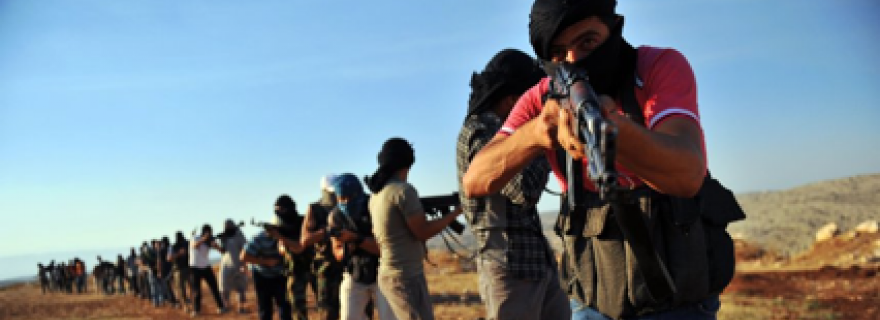How jihadists prepare their jihad
The increased number of Dutch foreign fighters in recent years has drawn a lot of attention and created fears of a terrorist attack. However, the Netherlands has been dealing with foreign fighters for more than a decade. What can we learn from the past?
The number of Dutch foreign fighters has significantly increased in recent years to approximately 220 individuals, which has spurred public anxiety about terrorist threats in the Netherlands. This fear is not unfounded, considering the recent terrorist attacks in Paris by allegedly former foreign fighters. However, due to the increased attention it appears as though we are dealing with a novel phenomenon, while in reality the Netherlands has been dealing with jihadist foreign fighters for more than a decade. Taking a closer look into these jihadist foreign fighting attempts throughout the past decade may tell us something about the potential of a terrorist threat and maybe highlight possible intervention points.
In a recent publication, we illustrated how the foreign fighting phenomenon has developed in the Netherlands between 2000 and 2013. We focused in particular on the preparatory stages of the foreign fighting attempts. To do so, we scrutinised 17 extensive terrorism-related police investigations from the 2000-2013 period and conducted 20 interviews with public prosecutors, police investigators, and criminal defence lawyers. To illustrate periodical differences in the modus operandi of the 51 foreign fighters that were studied, we divided the data in different episodes.
The preparatory stages of jihadist foreign fighters
We were able to distinguish five different stages the jihadists need to go through in order to complete their attempts to travel to a foreign conflict area. The different stages do not necessarily need to succeed each other, but can also occur simultaneously. Within each stage, each (potential) foreign fighter conducts certain concrete actions and takes particular decisions:
- The orientation stage, in which jihadists focus on a radical doctrine and a suitable target area. In some cases the ideology determines the target area, whereas in other cases the jihadists choose a particular ideological rhetoric that can legitimise the target area that has already been determined.
- The co-offending stage, in which foreign fighters connect with facilitators who stimulate them and facilitate their preparations and who can legitimise the foreign fighters’ potential behaviour.
- The operational stage, in which foreign fighters acquire funds and travel documents, often through crimes such as passport fraud, burglaries and theft. They also do physical training, determine the travel routes and buy airplane tickets at this stage.
- The finalisation stage, in which foreign fighters conduct emotional and administrative activities, such as the recording of video testaments, saying goodbye to friends and family, closing bank accounts, and terminating rental leases. Such activities indicate a near departure, which signals a useful intervention point.
- The departure stage, in which foreign fighters actually try to leave the Netherlands and reach their intended destination. They rely heavily on so-called brokers at this stage, who function as intermediaries between the Netherlands and the intended destination. Without the help of these brokers, foreign fighting attempts often fail or result in impulsive behaviour. Hence, removing such brokers could decrease the number of successful foreign fighting attempts.
Periodical differences
Although all stages apply to all foreign fighting attempts studied, we did find some differences over time in the way in which the attempts were executed. Three situational factors were identified that caused the periodical differences between 2000 and 2013. The first factor is the geo-political situation in the world, which influences the choice of a target area. As a result, changes in the geo-political situation lead to changes in ideological orientation, the intended destination, and the determination of the enemy. The Netherlands, for instance, was considered an enemy when they collaborated with the Americans during the invasion in Iraq and Afghanistan, which made the Netherlands a potential target for returning foreign fighters, especially between 2003 and 2006. A second factor is the social environment in which the foreign fighters are embedded. Relatively hierarchically organised international networks have changed into relatively unorganised shifting homegrown networks over time. Whereas this change meant that foreign fighters had less money and means at their disposal over time, it also encouraged innovative procedural changes to make sure the foreign fighting preparations continued. The third factor that influences the modus operandi of foreign fighters is technological developments. The rise of the internet and social media has increased the visibility of foreign conflicts, which has enhanced political awareness among jihadists. In addition, new communication opportunities emerged due to the internet, which strongly intensified communication between jihadists. As a result, this strongly facilitated the pre-departure stages in recent years.
To conclude
This research shows that a phenomenon like foreign fighting contains predictable steps that could be used for intervention. At the same time, however, this phenomenon is dynamic and changeable when affected by situational factors. Moreover, the findings imply that a potential terrorist attack in the Netherlands does not necessarily have to result from the increasing number of (returning) foreign fighters, but could rather be the consequence of the government’s attitude towards ISIS. Keeping the past in mind, the Dutch participation in the anti-ISIS coalition could provide a justification for (returning) foreign fighters to retaliate.
This blog contribution is also published on Leiden University's Leiden Law Blog.


